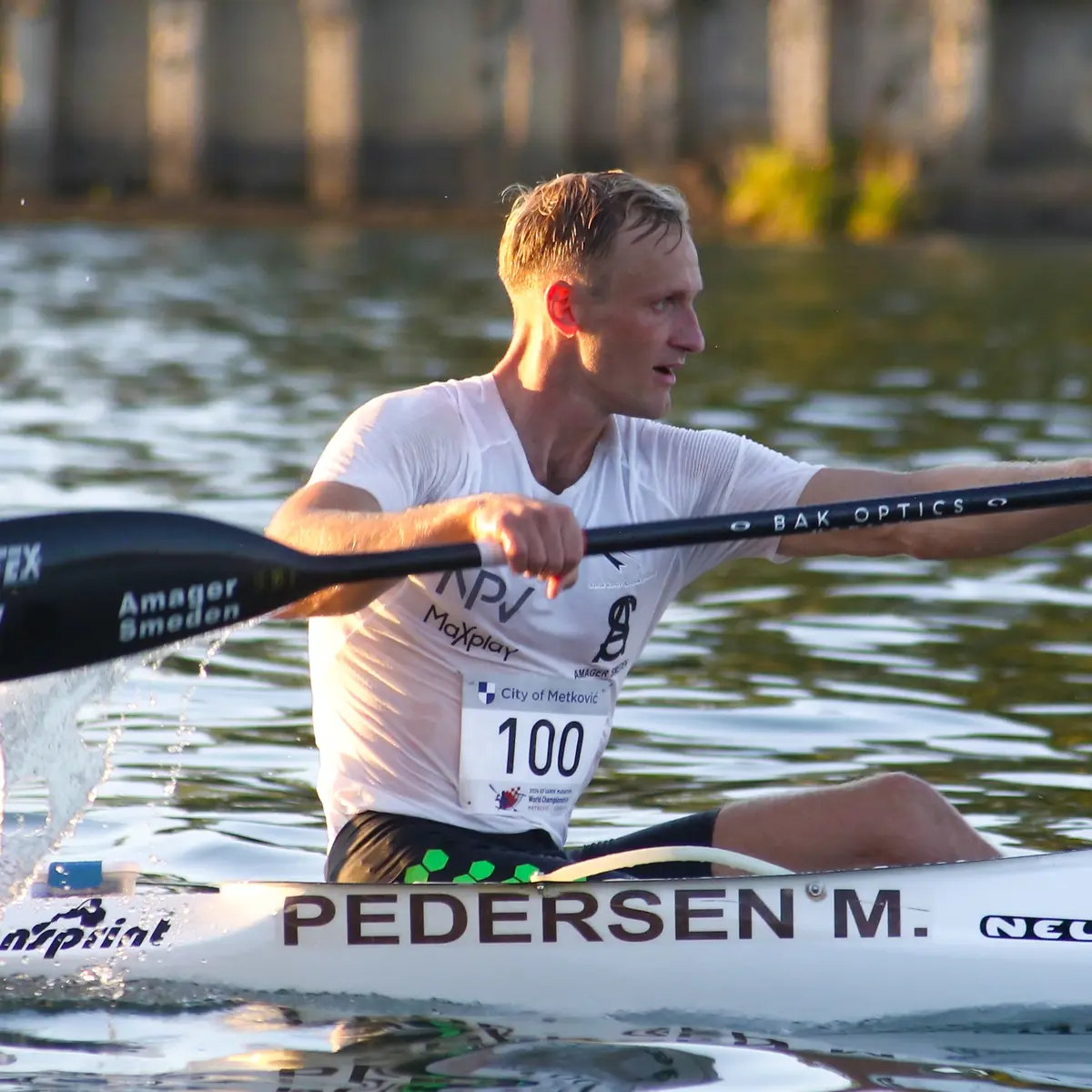
Mads Pedersen
ICF Canoe Marathon World Championships
Mads' headline numbers
Mads' strategy
Fueling
Carbohydrate is the main fuel you burn when racing. Failing to fuel properly is a leading cause of underperformance in longer races.
Since Mads’ marathon canoe races last around two hours, he sits right on the threshold of carbohydrate recommendations, moving up from 60g/h toward 90g/h for exercise lasting more than two hours. Given both the duration and the extremely high intensity he sustains, Mads has gradually increased the amount of carbs he can comfortably consume in races. His intake has progressed from ~50g/h early in 2022, to ~58g/h at the European Champs in July 2022, then ~78g/h at the European Champs in 2023, ~81g/h at the World Champs in 2024 and now to over 90g/h. This impressive level of carbohydrate not only fueled his title-retaining performance, but also supports his training by maximising performance adaptations. Arguably, the bigger challenge in canoe marathon racing is the logistics of getting this amount of fuel on board. As discussed in Mads’ previous case studies, he relies on liquid carbs from drink bags around his neck. This time he increased the concentration of these drink bags to boost carbohydrate intake without a proportional rise in fluid volume to hit his highest carb intake yet.
Hydration
Taking on board an appropriate amount of fluid and sodium is essential to maintaining blood volume and supporting the cardiovascular effort needed to perform on race day.
Whilst the absolute amount of sodium and fluid consumed per hour is important, it’s critical to consider these in relation to each other. This is known as 'relative sodium concentration' and it’s expressed in milligrams per litre (mg/L). How much sodium you’re taking in per litre of fluid is more important than the absolute amount taken in per hour.
Mads drank a similar quantity of fluid in this race as in his previous ‘hot’ and ‘very hot’ marathon races. He uses his drink bags to predominantly get fuel into his system, but knows that two to three of these ~600ml bags helps to replace a high proportion of his sweat losses across the two hour races. In each bag, Mads uses one PH 1000 (Tablet) to replace his sodium losses at a moderate concentration, as well as aid retention of the fluid he is drinking.
Caffeine
Beyond the Three Levers of Performance (carb, sodium and fluid), caffeine is one of only a few substances that is proven to improve performance for most endurance athletes as it can help stave off mental and physical fatigue.
Mads took one caffeine tablet ~30 minutes before the gun, which was a new addition to his strategy on race day. On top of his final pre-race PF 30 Caffeine Gel, this put Mads’ into the recommended dosing range of the stimulant to maximise its ergogenic effects.
How Mads hit his numbers
Here's everything that Mads ate and drank on the day...
Mads' weapons of choice
Final thoughts
Mads' full stats
Data Confidence?
There is good confidence in the accuracy of the data reported. An athlete feels that the numbers closely reflect what they consumed despite a couple of estimations which may carry some degree of error. The majority of what was consumed is recorded to a high level of specificity (most volumes are known through the use of bottles brands quantities flavours). The numbers are very plausible and align with previous data recordings (if an athlete has collected data previously).